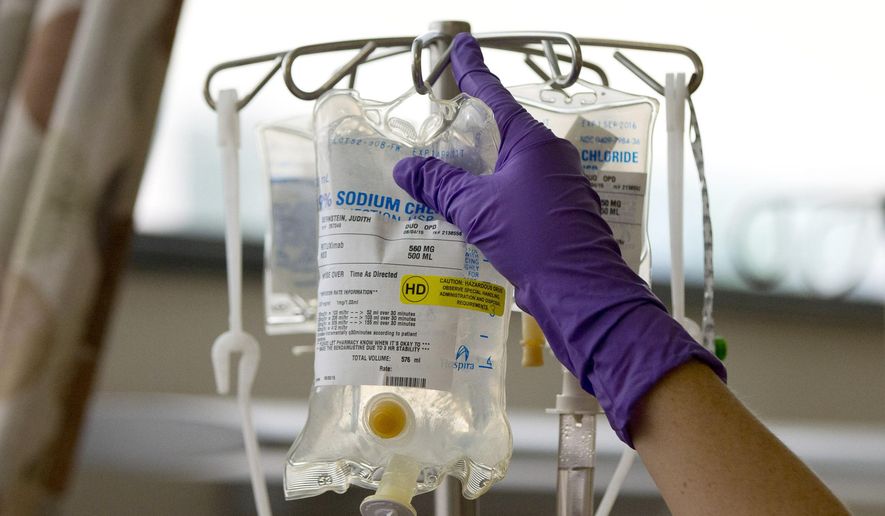Researchers have found that black and Hispanic children admitted to pediatric intensive care units for cancer treatment were more likely to die than their white counterparts.
Nationally, 8.5% of black children and 8.1% of Hispanic children with cancer died after admission to the pediatric intensive care units (PICU) compared to 6.3% of non-Hispanic white children, according to a study led by researchers for Michigan State University and Spectrum Health.
“I was surprised in some ways that it was such a stark difference,” said senior author Dr. Surender Rajasekaran, an assistant professor in the Michigan State University College of Human Medicine and medical director of research at Spectrum Health Helen DeVos Children’s Hospital. “This is an indication of the magnitude of the problem.”
The study, published last month in the Pediatric Critical Care Medicine journal, analyzed data from 23,128 admissions at 135 PICUs and 12,232 patients between 2009 and 2018.
Dr. William Cance, chief medical and scientific officer for the American Cancer Society, said the results are not too surprising since risk factors and outcomes of cancer differ for every racial and ethnic group, but added that it is good to have data.
“There are potential genetic differences that have evolved over thousands of years and/or environmental factors that likely influence outcome. Disparities in socioeconomic status are additional potential environmental disparities that would likely play a role,” said Dr. Cance, who was not involved in the study.
Although environmental and genetic factors could contribute to higher mortality rates among minorities, the researchers said they suspect that socioeconomic factors such as poverty and lack of access to primary care play a larger role.
About 18% of all children in the U.S. live in poverty, according to The Annie E. Casey Foundation, a private philanthropy organization in Baltimore. Poverty rates among minority children are two or three times higher than white children — 32% for black children and 26% for Hispanic kids, compared to 11% of white kids living in poverty.
If black and Hispanic children are unable to access primary care, then their diseases are more likely to advance to the late stages of illness by the time they are admitted to the PICU, the researchers note.
Racial disparities in health care, a known issue for years, has recently made the spotlight due to COVID-19, which has disproportionately affected blacks, and protests over police brutality against blacks in cities and towns across the U.S.
“Regarding COVID-19, the one thing we know for sure is that we don’t yet understand the complex biology of this coronavirus and the risks of severe disease,” Dr. Cance said. “Given these findings along with emerging data that patients with cancer in active treatment have worse outcomes from COVID infection, we should err on the side of aggressive monitoring, surveillance, and follow-up for all children, mindful of potential worse outcomes in the racial/ethnic minority children.”
There were also regional differences in death rates, the study shows, with black children in the Southern states and Hispanic children in the Western states dying at a rate about 1.5 times higher than whites. The large number of new immigrants in the West and a larger portion of blacks living in rural areas of the South could account for the differences, says a statement by Michigan State University.
“It is known that issues of social and environmental injustice disproportionately affect blacks, Hispanics, and other minorities. In impoverished urban and rural regions, children are more likely to be exposed to environmental toxins and socioeconomic stressors,” the study says. “Furthermore, child poverty is clustered geographically, and race/ethnic composition associates most strongly with poverty in rural farming areas.”
The researchers note that the South has a very high regional poverty rate of more than 16% and that the South and West have more Hispanic farm laborers, who are exposed to environmental toxins, compared to the Midwest.
Among racial and ethnic groups in the Midwest and Northeast, the study found no statistically significant differences in death rates. Minority cancer patients diagnosed with other health conditions such as lung diseases and sepsis also had higher deaths rates than white patients with the same diagnoses.
Data show that tens of thousands of diagnoses for common cancers in the U.S. have been missed or delayed due to shutdown orders and social distancing measures stemming from the coronavirus pandemic, which oncologists say could result in identifying more cancers at a slightly later stage.
Health centers in some parts of the U.S. are scheduling screening tests and exams with certain precautions in place as society starts to reopen. A cancer diagnosis could make someone more vulnerable to COVID-19 and to developing severe illness
More than 14,500 children and young adults (through 19 years old) in the U.S. are diagnosed with cancer each year, according to the Centers for Disease Control and Prevention.
This year, about 11,050 children under the age of 15 in the U.S. will be diagnosed with cancer, the American Cancer Society estimates.
• Shen Wu Tan can be reached at stan@washingtontimes.com.




Please read our comment policy before commenting.